The members of the Denham Waterski Club are among the few people in the Chilterns who are grateful for HS2. They have a superb new clubhouse overlooking the tiny lake where their motorboats whizz round in ever tighter circles, thanks to the fact that their old one was in the way of the massive viaduct being built over the Colne Valley for the new line. The heavy concrete structure does somewhat blight their view but they are undoubtedly delighted with their Faustian deal.
The escalating costs and the dithering of ministers have meant that many of the original advantages of HS2 have been lost
The few hundred thousand pounds this has cost HS2 Ltd – or rather the taxpayers who are paying for the line – is trifling in relation to the total bill, which is now heading for something like three times the original estimate of £35 billion. But it provides a small clue as to why the project is costing so much.
As an article in the Financial Times this week explained, Britain – and indeed the United States – pays a Nimby tax on any new infrastructure. We are good at protesting, less good at building, which is why we have fewer tram systems, high speed lines and electric railways than our European counterparts.
Whereas a new near-200-mile TGV line in France, completed in 2017, cost £46 million per mile, HS2 is currently reckoned to be costing £262 million per mile – and rising. Moreover, HS2 has already been 23 years in preparation, as opposed to the French scheme, which was completed, from drawing board to operation, in half that time. The FT puts much of the blame for these bloated costs on ‘the rise of the environmental movement and the emergence of homeowners as organised lobbyists, [which] have added significant delays, alterations and associated costs to construction projects in the US’. Moreover, many of the fears in terms of environmental degradation have never materialised, as observed by those living near the HS1 route on which services now hurtle almost unnoticed through to the Channel Tunnel.
Opponents of HS2 do, at times, fail to understand the ambition of such a project. Viewed dispassionately, it has given rise to much brilliant engineering and innovative solutions to problems. The concerns of local residents and of the impact on the wider environment are constantly taken into account by those building the line and their argument that this is a fundamental cause of its enormous cost cannot be entirely dismissed.
Indeed, it is only too easy to underestimate the sheer scale of the task. On a visit to the site near Denham run by Align, a consortium of three major construction companies, I was struck by the sight of a car park with a capacity for 1,000 cars next to the temporary portacabins used as the HQ for the Align contract. This contract, at £2 billion, is the smallest of the four main contracts to build the line between Old Oak Common in west London and Birmingham. There are in fact 2,500 workers on this temporary site, which the contractors have promised to return to nature, including a new grassland incorporating the three million tons of chalk excavated from the tunnels once the work on their 22kms of line is completed. The site is nestled between the two major projects on this section, the two-mile-long viaduct over the Colne Valley that has given the local water-skiers their windfall, and a ten-mile twin-bore tunnel, currently three-quarters completed, under the Chilterns.
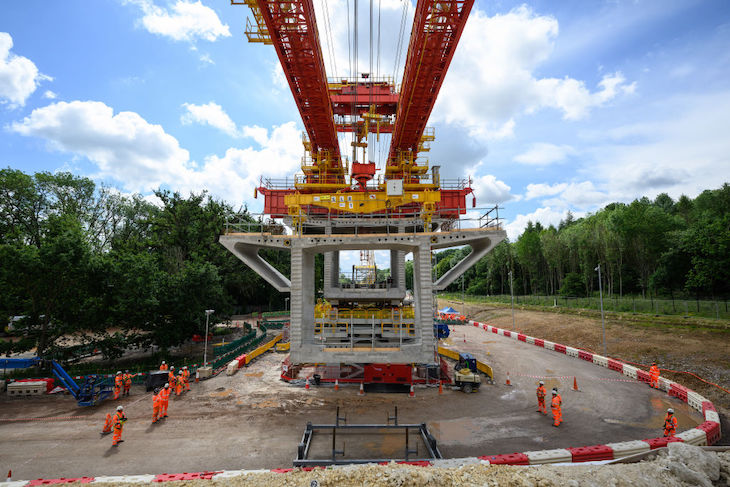 Parts of the newe Colne Valley Viaduct (Photo: Getty)
Parts of the newe Colne Valley Viaduct (Photo: Getty)
The latter is a prime example of how local interests – Nimbyism – have added to the costs. Tunnelling routinely costs ten times more than building above ground and early on ministers succumbed to local protestors in these Tory heartlands and agreed to the tunnel as if it were the Alps that needed crossing rather than a series of gentle hills. Overall, the 140-mile first phase of HS2 will include 32 miles of tunnel and nine miles of viaduct, whereas the French would have been able to muddle through mostly on the surface.
So it is possible to have some sympathy for the supporters of this megaproject, given they are building a railway line through areas populated by articulate and powerful dissenters. The Victorian promoters of railways faced equally vociferous objections, which explains many of the curves and wiggles on our existing network.
Nevertheless, much of that sympathy is lost when examining more closely what has happened since the project was first mooted in the dying days of the last Labour government. It’s not so much that the project has been mismanaged but rather that there has been a complete failure of oversight.
A very senior insider told me that there ‘has never been any proper management and accountability of the project. There have been constant changes to the specification with no understanding of the cost implications.’ Remarkably, there is no overall budget, the business case has not been reviewed despite the changes in specification and rises in costs, and the accounting is carried out, bizarrely, in ‘2019 prices’ – a subterfuge to disguise the soaring expenditure. The only publicly available figure for last year’s expenditure is found in the supply estimates which record that it was £5.7 billion. There has been no public explanation or ministerial statement on the reasons for this figure.
And this is the point at which any remaining sympathy is lost: the lack of any public engagement about the state of this project. Take a look at the minutes of the HS2 Ltd board on its website and you find more black patches than on a ship full of pirates – nearly all the information is redacted. When challenged about this, the press office told me it was due to ‘GDPR’, which is utter nonsense. This is part of a wider pattern of secrecy and obfuscation that prevents any rational debate about a project that is costing the equivalent of a new hospital every month.
The escalating costs and the dithering of ministers have meant that many of the original advantages of HS2 have been lost. It will not, as originally planned, connect with Heathrow or with HS1, the line to the Channel Tunnel. Nor will there be a link to the West Coast Main Line north of Manchester through to Scotland, and on the east side, plans have been reined back to leave a leg hanging aimlessly somewhere in the East Midlands and even that may be in doubt. And famously, Euston, where a huge area of north London has been razed to the ground, will see no high speed trains until 2041 at the earliest. Finally, nothing illustrates the lack of a coherent strategy around this scheme more than the fact that in the next few weeks parts of two tunnel-boring machines will be buried under a huge concrete platform at the eastern end of the Old Oak Common site because no money has been allocated to build the tunnel towards Euston. Once the station there is complete, which is scheduled for the end of this decade, it would not be possible to bring in the boring machines, hence the need to install them now.
For a time, therefore, and possibly forever, thanks to a combination of our Nimby culture and the incompetent management of the project, we are going to get the worst of both worlds – a massively expensive scheme that links Acton to Aston, and very little else. But at least the water-skiers of Denham are happy.
Got something to add? Join the discussion and comment below.
Get 10 issues for just $10
Subscribe to The Spectator Australia today for the next 10 magazine issues, plus full online access, for just $10.

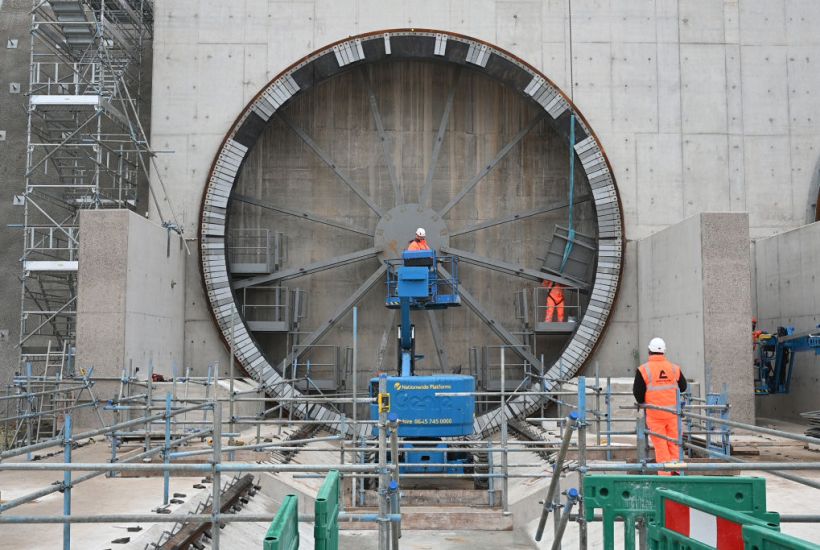
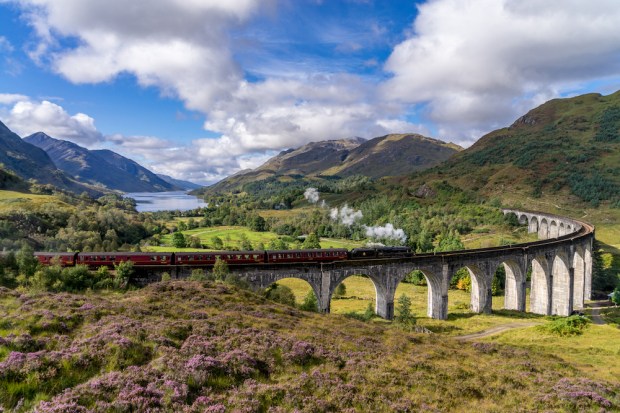

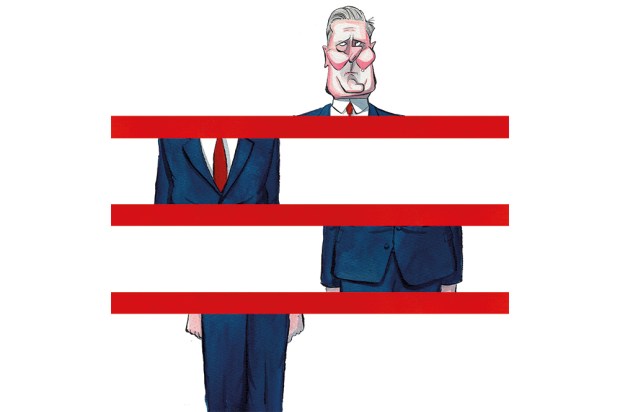


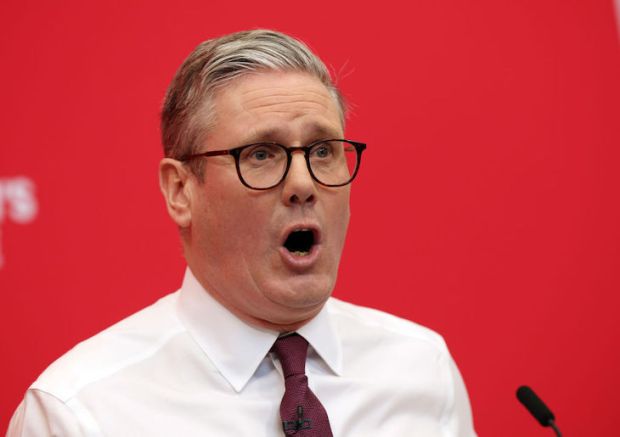












Comments
Don't miss out
Join the conversation with other Spectator Australia readers. Subscribe to leave a comment.
SUBSCRIBEAlready a subscriber? Log in